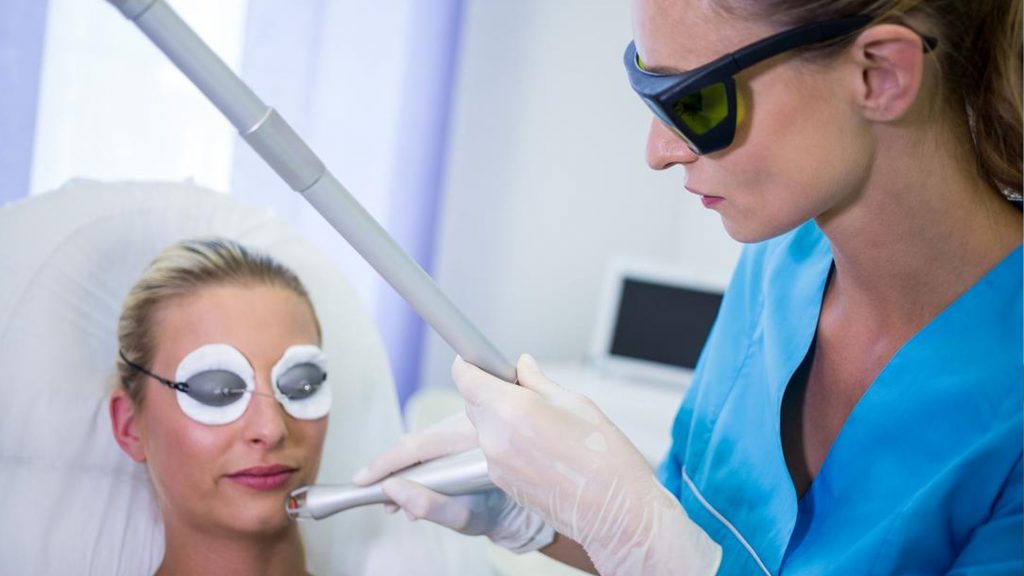Laser lipolysis is a non-surgical, so non-invasive and safe way to get rid of unwanted fatty tissue. What is laser lipolysis, who is it recommended for and what are the contraindications for its implementation? Laser lipolysis and injection lipolysis – what are the differences between the two procedures?
Laser lipolysis and injection lipolysis – differences
Laser lipolysis, just like injection lipolysis, is used to quickly get rid of unwanted fat which we cannot reduce with diet or exercises. The difference between the treatments is that the laser light not only shapes the figure, but also firms the skin. During the treatment, the laser heat acts on the subcutaneous tissues stimulating them to produce collagen and elastin – the proteins responsible for the condition of our skin.
Even though the laser deeply penetrates the skin, it does not damage blood vessels or dermis. In addition, it stimulates already existing collagen fibers, which improves the skin tone. Preparations injected during injection lipolysis do not have such properties. Also, during laser therapy much more fat is removed than during injection lipolysis.
Laser lipolysis – for whom?
This procedure is intended for people who want to firm their skin and fight cellulite or have had liposuction. Laser lipolysis smooths the skin after liposuction and prevents it from sagging.
To qualify for the procedure, you must be in good health and maintain the correct body weight. Why? Because laser lipolysis is a body shaping procedure, not a slimming one.
Laser lipolysis
Before the procedure
Before the procedure, you should have your blood and urine tested and quit smoking at least 2 weeks before. Also, 6 hours before the planned visit, you are not allowed to drink or eat.
The procedure
Doctor makes a small nick, most commonly in a less visible area that can be hidden. There is an optical fibre with a diameter of about 0.3 mm inserted. Then the laser breaks up the fat cell membranes and, as a result, releases the triglycerides. This way fat cells are turned into an emulsion that is removed from the body in two ways. Small amounts of fat are transported to the liver and removed from the body through metabolic processes. The larger amounts are sucked out with a special catheter.
The fat can be removed from the following areas of skin:
- face (under-eye bags, double chin or chubby cheeks),
- abdomen,
- waist,
- hips,
- buttocks,
- shoulder,
- sides
- thighs,
- knees,
- chest.
After the procedure
If the procedure involved a large body surface, a compression garment should be used. Also, the doctor may see the need for a short antibiotic treatment to reduce the risk of infection. After 10-12 days, when the swelling and redness disappear, it is a good idea to gently massage the skin area. You have to abstain from physical exercise for a month. The final effect is visible after 1-2 months.
Laser lipolysis – contraindications
The procedure is not recommended in the case of liver, thyroid, skin and cardiovascular diseases as well as renal failure, blood coagulation disorders and diabetes.



Leave a Reply